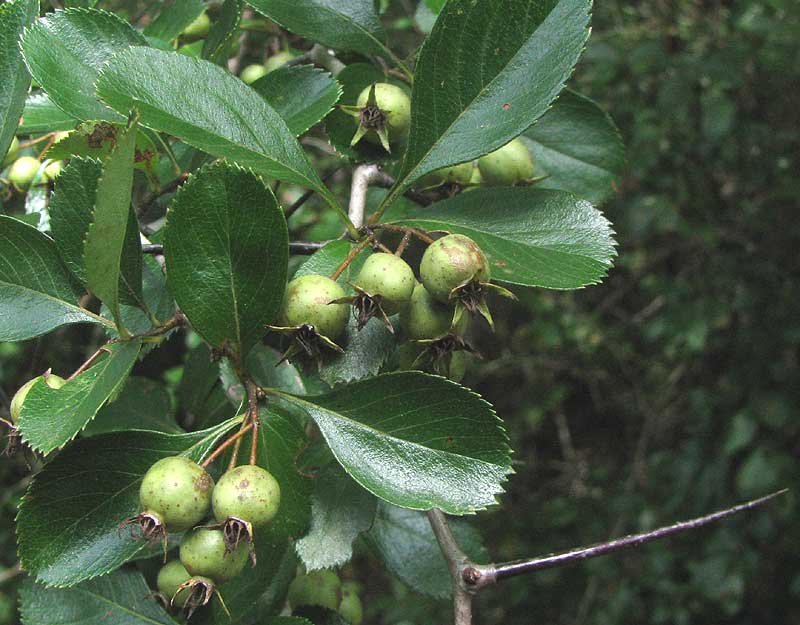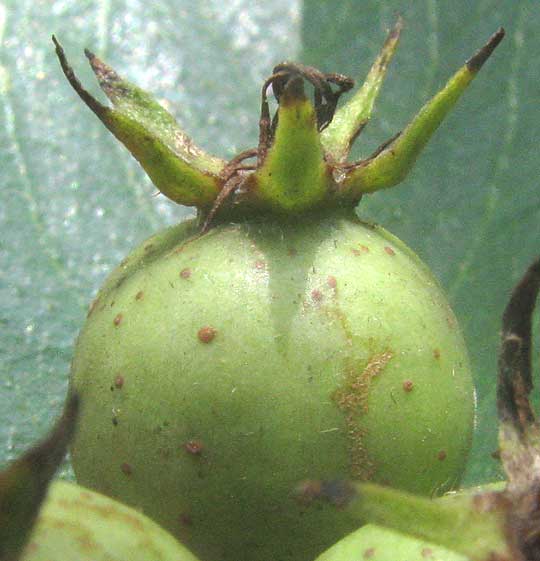Excerpts from Jim Conrad's
Naturalist Newsletter

from the the July 29, 2012 Newsletter issued from the woods of the Loess Hill Region a few miles east of Natchez, Mississippi, USA
COCKSPUR HAWTHORN'S JULY FRUITS
In the world of tree taxonomy, the hawthorns -- genus Crataegus -- are an especially hard group to figure out. Being members of the Rose Family producing flowers similar to plum blossoms, and fruits like crabapples, with stems often armored with substantial spines, normally it's easy to see that a hawthorn is a hawthorn, but figuring out the species can be difficult to impossible. Impossible because even the experts aren't in agreement. In the past a thousand or more species were recognized, most of which now are regarded as simple variations of other species. A good guess is that there's around 200 hawthorn species, but especially in North America it's just not clear what's what.
However, at a woods edge along a loess ridge near here an obvious hawthorn turned up that I was pretty sure I recognized as a common species from my Kentucky days. You can see its leathery, lustrous-topped leaves, green fruits (the haw, which later in the season will turn bright red) and slender, three-inch-long spine (7cm) at the top of this page.
Below you see an immature haw, which later in the season will turn red, topped by its characteristic, long-enduring sepals, with a few of spring's blackened, dried-up stamens lying among them.

This is the Cockspur Hawthorn, CRATAEGUS CRUS-GALLI, distinguished among the many hawthorn species for its unlobed leaves that are widest above their middles and with their lower blade margins gradually diminishing toward the petiole's point of attachment, providing the petiole with "wings." Most Cockspur Hawthorn leaves found on the Internet are not as broadly rounded as ours, except from trees from Alabama and eastern Texas. Apparently trees in our general area have blunter tips than more northern ones. Cockspur Hawthorn is famous for being very variable, and for having been given a particularly large number of names by botanists who were sure they'd discovered a new species.
Cockspur Hawthorn is an especially handsome and adaptable species, which accounts for horticulturalists having developed several cultivars from wild trees, including a thornless form.
Theoretically the cherry-sized fruits are edible, but there's much more bony seed than flesh and the flesh is dry and not very tasty, so unless you're starving or just want to nibble on something, these are best left to wildlife, which of course relish them, especially the birds. Certain birds build nests inside the tree, whose denseness helps hide the nests, and whose spines protect them.